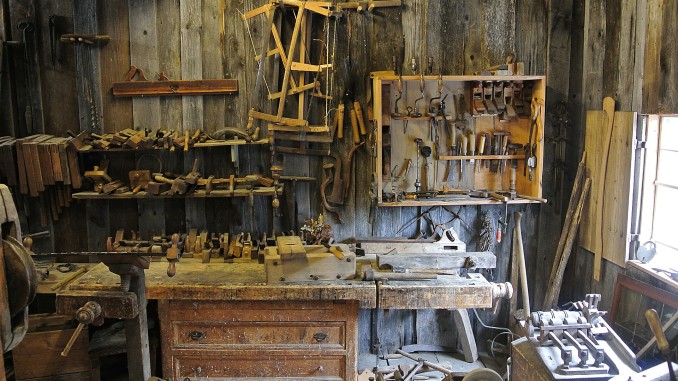
The other weekend my girlfriend and I were in Games by James in the Mall of America killing some time before dinner. We looked at the walls of games and debated over the practicality of picking up expansions to games that we currently played versus new ones altogether. And then we rounded the corner to the puzzle wall and I was drawn in like a moth to a flame. I have no idea why – I used to do them all the time growing up, but I hadn’t done one or even really thought about them since I was in early high school [mumbles an incomprehensible number] years ago. But we both looked at each other and grabbed one to put down on the table for something that would take a couple of evenings. As of now we’ve spent a couple of evenings working on it, and it’s starting to come together nicely.
I also realized how much I enjoyed doing them and didn’t realize how much I had missed the activity. It’s an incredibly engaging activity that forces you to practice several different ways of thinking, and I think there are a few of these skills that can be incredibly useful as a GM writing for his group, whether it’s a single adventure, a longer arc, or a full campaign.
-
The Big Picture
You should have some idea what you want the adventure or campaign to look like before you start to put the pencil to paper or fingers to keyboard. This big picture is not immutable – the vision can (and probably will) change over the course of the project. It might change several times. It might end up looking very different from your first concept, but it’s really important that you have it. This is something you can and will refer back to constantly in order to make sure everything is still going in the same direction and that what you’re doing is clear.
-
The Individual Pieces
The devil is always in the details. What individual scenes or single adventures are going to make up the adventure or campaign? The bigger the project, the smaller the individual pieces are going to be – a single scene is a large piece of a single self-contained adventure module while it’s a much smaller piece in a campaign arc. Then you need to decide if these individual pieces are going to look like. Are they going to be standard or are they going to need to be cut into odd shapes in order to fit properly? Knowing what the big picture is supposed to be makes this step so much easier. Don’t forget the PCs are pieces in this puzzle as well – whether or not they’re pregens for a convention one-shot or characters built by the individual player, they are keystone pieces and will undoubtedly be among the most intricate pieces in the entire thing, requiring you to craft more intricate pieces to surround them and make sure they fit well into the overall picture.
-
Patterns and Themes
Colors, patterns, and textures are all big things in puzzles, whether you’re putting together a Thomas Kinkade painting or beer bottles from all over the world – being able to recognize these things and how they fit into the overall picture is going to help you put the puzzle better more efficiently. The same thing is true of your adventure or campaign – what themes do you want to explore? What sorts of plot devices and patterns can you utilize to get that across and help your players realize what is important and what is the background that the adventure is being presented in? Recurring motifs such as a certain type of monster that appears, musical cues, or simply altering the tone of your voice a certain way every time it comes up can help to really catch the players attention and really focus in and engage on that section of the picture.
-
How Do You Build It?
You get to decide how you build your adventure just like you get to decide how you’re going to approach putting together the puzzle. You can start by building the frame of the adventure by putting together an outline that you can then fill in. Or you can start with an individual scene and build out from that. However you want to approach it you’ve already put the thought into what the big picture is going to look like so you have that to reference. You also have an idea of what the individual pieces are going to look like and how they’re going to have to fit into the overall adventure or campaign. Finally you know what kinds of patterns and themes are going to be present in what you’re creating to help you to guide where everything should go and how it might fit together.
This advice can even be applied to other things at the gaming table than just adventure writing. Building a character that is effective and fun to play can benefit from these four simple concepts. Putting together individual encounters within the adventure can benefit. Visual things, such as putting together a map or building plan can absolutely benefit from these concepts. Putting together an effective soundtrack for a game can benefit. I bet you use them all the time without even thinking about it – imagine how much more you could do with less by actually thinking about and actively applying them.
